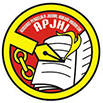PERADILAN AGAMA SEBAGAI LEMBAGA PENEGAK HUKUM ISLAM DI INDONESIA
DOI:
https://doi.org/10.28946/sjpl.v1i1.3373Abstract
The Religious Courts in Indonesia as Islamic law enforcement institutions have a structured format to ensure justice in resolving family and religious cases. This includes religious judges, clerks and administrative officers, designed in accordance with legislation specifically related to Islamic law, making the process in accordance with the principles of the Koran and hadith. Religious judges play a central role as interpreters of Islamic law. Religious court decisions are not only based on legal facts, but also consider human values and morality in accordance with Islamic law. Religious courts are not only a dispute resolution forum, but also a place for mediation to achieve justice. Alternative methods such as mediation are becoming an integral part of the religious justice format, offering solutions that are in line with Islamic values and promoting constructive dialogue. This process allows for a fair and dignified resolution, while maintaining harmony in society. The importance of enforcing Islamic law through religious courts is not only in the context of justice, but also as a form of respect for religious diversity in Indonesia. Its structured format and detailed explanations reflect the religious courts' commitment to maintaining integrity, justice and social harmony in a multicultural society and diverse beliefs. This research aims to analyze the position and authority in the religious justice structure in terms of statutory regulations. The research uses normative legal research. The approach used is a statutory regulation approach. The legal materials used consist of primary legal materials, secondary legal materials and tertiary legal materials. Data analysis was carried out qualitatively. The role of the Religious Courts is to regulate the traffic of case examinations in courts within the scope of the Religious Courts. Judicial power is a fundamental power as a pillar of power which has the function of upholding justice without the participation of other powers. The authority of religious courts concerns two things, namely relative authority and absolute authority.References
Cahyani, Andi Intan. “Peradilan Agama sebagai Penegak Hukum Islam di Indonesiaâ€, Jurnal Al-Qadau Peradilan dan Hukum Keluarga Islam, Volume 6, No. 1 (2019): hal. 129. https://journal.uin-alauddin.ac.id/index.php/al-qadau/article/download/9483/6676/.
Muhammad, Rusli, Potret Lembaga Pengadilan Indonesia. Jakarta: Raja Grafindo Persada, 2006.
Mujahidin, Ahmad. Peradilan Satu Atap Di Indonesia, Bandung: PT Refika Aditama, 2007.
Rasyid, Roiha A. Hukum Acara Peradilan Agama, Jakarta: Raja Grafindo Persada, 2016.
Republik Indonesia, Undang-undang No. 14 Tahun 1970 tentang Ketentuan-Ketentuan Pokok Kekuasaan Kehakiman, Lembaran Negara Republik Indonesia Tahun 1970 Nomor 74, Tambahan Lembaran Negara Nomor 2951.
Soekanto, Soerjono, dan Sri Mamudji, Penelitian Hukum Normatif: Suatu Tinjauan Singkat, Jakarta: Raja Grafindo Persada, 2003.
Subiyanto, Achmad Edi. “Mendesain Kewenangan Kekuasaan kehakiman setelah Perubahan UUD 1945â€, Jurnal Konstitusi, Volume 9, Nomor 4, Desember 2012, h. 665-667.
Talli, Abdul Halim, Asas-asas Peradilan Dalam Risalah Al-Qada Kritik Terhadap Beberapa Asas Peradilan di Indonesia. Yogyakarta : UII Press, 2014.
Talli, Abdul Halim, Peradilan Agama Dalam Politik Hukum Islam. Jakarta: Raja Grafindo Persada, 2000.
Downloads
Published
How to Cite
Issue
Section
License
This work is licensed under a Creative Commons Attribution 4.0 International License.
Authors retain copyright and grant the journal right of first publication with the work simultaneously licensed under a Creative Commons Attribution License that allows others to share the work with an acknowledgment of the work's authorship and initial publication in this journal.
Please note that the journal has changed its copyright policy. From vol. 1, 2023 onwards, the author will retain the copyright if the article is accepted for publication.



















